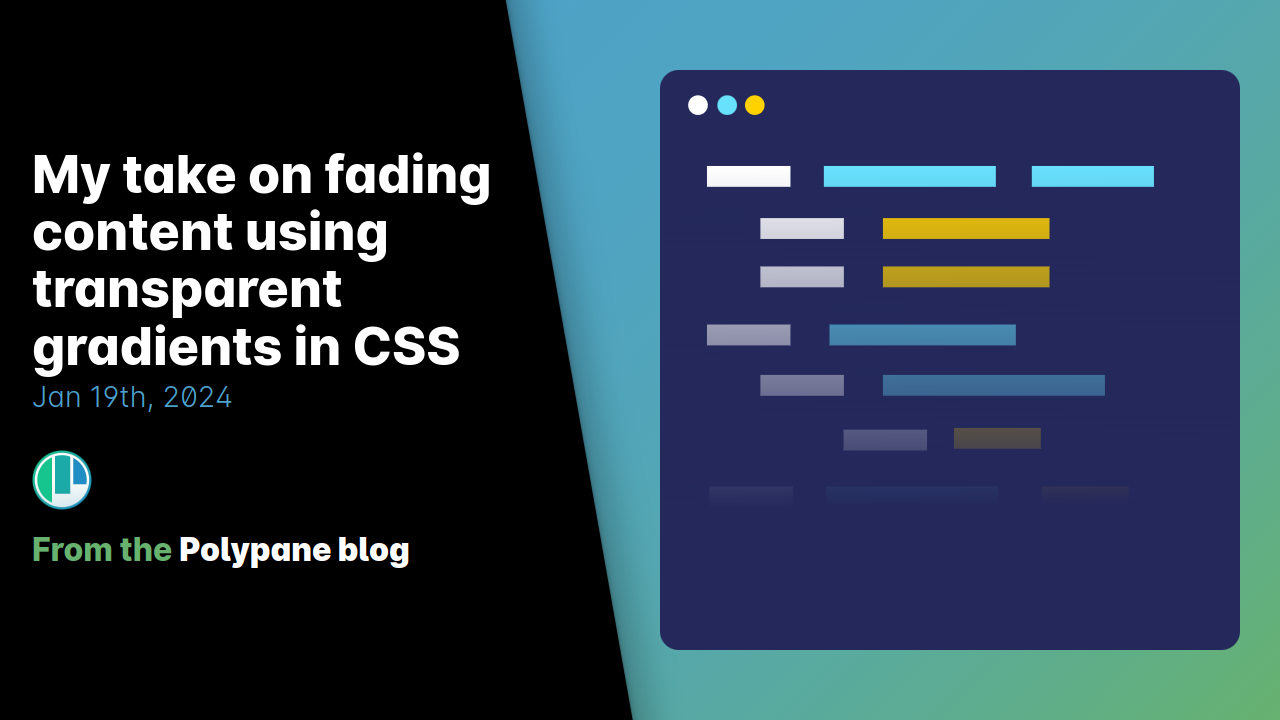Fading Text Content Techniques in CSS Explained
Concepts de base
The author explores two techniques, background-clip and mask-image, to achieve fading text content in CSS, highlighting their differences and browser support.
Résumé
The content delves into two CSS techniques, background-clip and mask-image, to create fading text effects. Background-clip restricts the background to be visible only behind the text, while mask-image uses an image as a mask layer. Both techniques allow for selectable words and even fading across gradients. Browser support varies between the two methods, with background-clip being more widely supported than mask-image. Each technique has its advantages and downsides, such as color preservation or transparency issues with emojis.
Personnaliser le résumé
Réécrire avec l'IA
Générer des citations
Traduire la source
Vers une autre langue
Générer une carte mentale
à partir du contenu source
Voir la source
polypane.app
My take on fading content using transparent gradients in CSS | Polypane
Stats
"background-clip: text is supported in all evergreen browsers since 2016."
"mask-image has been supported across evergreen browsers since 2017."
Citations
"Background-clip restricts the background to be visible only behind the text."
"Mask-image lets you use an image as a mask layer."
Idées clés tirées de
by à polypane.app 01-19-2024
https://polypane.app/blog/my-take-on-fading-content-using-transparent-gradients-in-css/
Questions plus approfondies
How do these fading text techniques impact accessibility for users with visual impairments?
Both the background-clip and mask-image CSS techniques for fading text content can have implications for users with visual impairments. When using background-clip to fade text, the transparency of the text may make it difficult for users who rely on high contrast or specific color combinations to read the content effectively. This could lead to issues in readability and comprehension.
On the other hand, when employing mask-image to fade text, the colors of the text are preserved while achieving a similar fading effect. This method may be more accessible as it maintains the original colors of the text, making it easier for users with visual impairments to distinguish between different elements within the content.
In terms of accessibility best practices, designers and developers should consider how these techniques affect readability and ensure that they provide alternative methods or adjustments for users who require specific color contrasts or visibility enhancements.
Could combining both background-clip and mask-image offer a more versatile approach to fading text content?
Combining both background-clip and mask-image techniques could indeed offer a more versatile approach to fading text content. By utilizing background-clip's ability to create a transparent gradient behind the text while maintaining individual word selectability, along with mask-image's capability to preserve original colors without affecting readability, designers can achieve a comprehensive solution that caters to various design requirements.
This hybrid approach allows for greater flexibility in customizing how texts fade out based on different design contexts. Designers can choose between emphasizing transparency effects (background-clip) or preserving original colors (mask-image) depending on their design goals while ensuring accessibility considerations are met.
By leveraging both techniques strategically within a single project or interface, designers can create visually appealing faded effects that enhance user experience without compromising accessibility standards.
What other creative applications could these CSS techniques have beyond text fading?
Beyond traditional use cases like fading out textual content, CSS techniques such as background-clip and mask-image offer creative possibilities across various design scenarios:
Image Overlay Effects: Applying these techniques over images can create subtle overlays that blend seamlessly into backgrounds without obscuring underlying visuals.
Highlighting Interactive Elements: Using fades on interactive elements like buttons or links can indicate hover states or interactions subtly.
Gradient Text Effects: Implementing gradients through these methods can produce unique typography styles by blending colors seamlessly into backgrounds.
Animated Transitions: Combining fades with animations can result in smooth transitions between different states of UI elements.
Decorative Borders: Creating intricate border designs by applying fades around container edges adds depth and dimensionality to layouts.
These CSS techniques open up avenues for experimentation in web design beyond conventional uses, allowing designers to explore innovative ways of enhancing visual aesthetics while maintaining usability and accessibility standards throughout digital interfaces.
0
